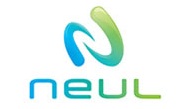Network start-up Neul has announced a wireless technology designed to connect machines using the “white space” which is unused within the broadcast TV band. The company plans to license its “Weightless” network technology to have billions of devices online by 2020.
The technology is designed to meet different needs from mobile data. A Weightless network which can cover the entire country – and reach every electric meter in a cupboard under the stairs – would cost only £50 million, and the spectrum to use it is free, said Neul, at a launch event in London today.
Machine links could be as big as cellular
 “Operators paid £22 billion in the 3G spectrum auction [in 2000].” said chief executive James Collier, a founder of Cambridge Silicon Radio. “This is the same amount of spectrum and it is better. It goes further and goes deep indoors. This could be as big as the whole cellular industry.”
“Operators paid £22 billion in the 3G spectrum auction [in 2000].” said chief executive James Collier, a founder of Cambridge Silicon Radio. “This is the same amount of spectrum and it is better. It goes further and goes deep indoors. This could be as big as the whole cellular industry.”
Although TV broadcasters have a national licence for their spectrum, it covers several different channels, which are used in different geographical locations – so at any given point many are unused. This so-called “white space” has been opened up by the UK regulator Ofcom to anyone who guarantees to follow a national database of free spectrum, and not to interfere with TV broadcasts.
The US has adopted similar policies, and other countries are expected to follow suit.
“White space is what’s left after you’ve hived off everything else you can charge for,” said William Webb, Neul’s chief technology officer, explaining that the licence-exempt white space spectrum is enough to connect machines such as utility meters or other devices – a sector which is predicted to need around ten devices per person in future.
Instead of re-using existing technologies such as 2G or 3G in this space, Neul has designed a new radio technology with characteristics suited to reliably transferring the small amounts of data which these devices will need to send. The system also does not use SIM cards or tie devices to particular operators – something which makes no sense in a machine-to-machine network, said Collier.
NeulNet – Neul’s system design – can have downlink speeds of up to 16Mbps to devices close to the base station, but this can scale down to about 10kbps at distances up to 10km, so the whole country could be covered by around 6,000 base stations, which could be placed on existing cell towers. The network uses frequency-hopping, so communications move to a different vacant 8MHz channel for each frame of data.
The terminal systems would have very low power requirements, so they can run for years on battery power, said Webb.
The potential customers include operators, consortia aiming to deliver smart grid systems and other groups such as local authorities or petrol station operators. Each would be able to use the network, and create their own networks on top of it.
Standards body planned
Although Neul has created the technology, it plans to license it to as many people as possible, said Collier. “Having 100 percent of a small pie would be stupid. If we are going to connect a billion devices per year, that is something we can’t do on our own.”
Neul will licence its patents, and create a standards group – managed by the Cambridge Wireless group for now – which will maintain and publish the standards, which it hopes other hardware manufacturers will adopt. “The model is very much like the Bluetooth SIG,” said Collier.





